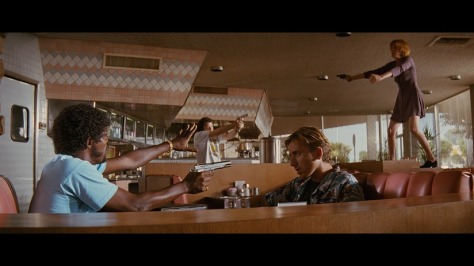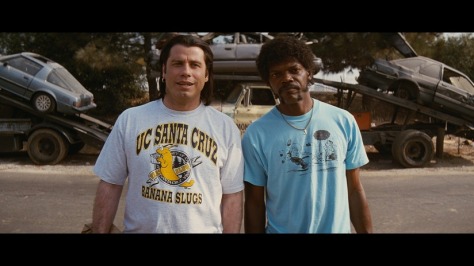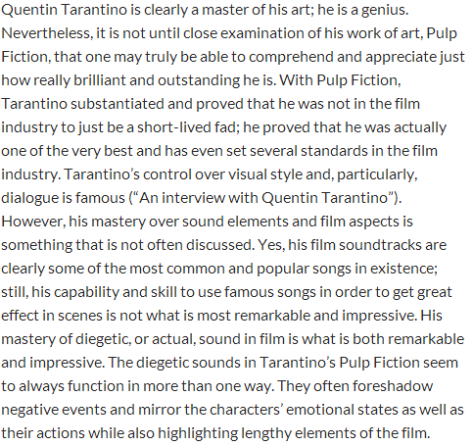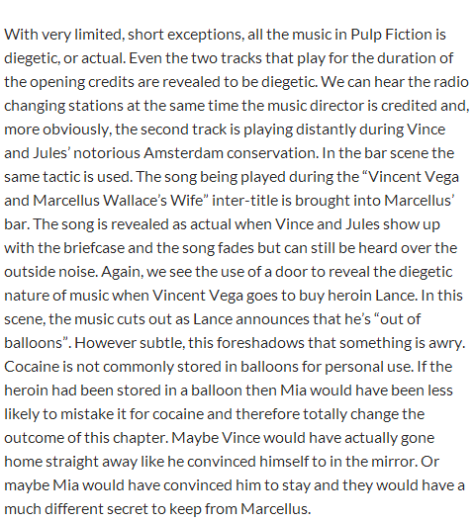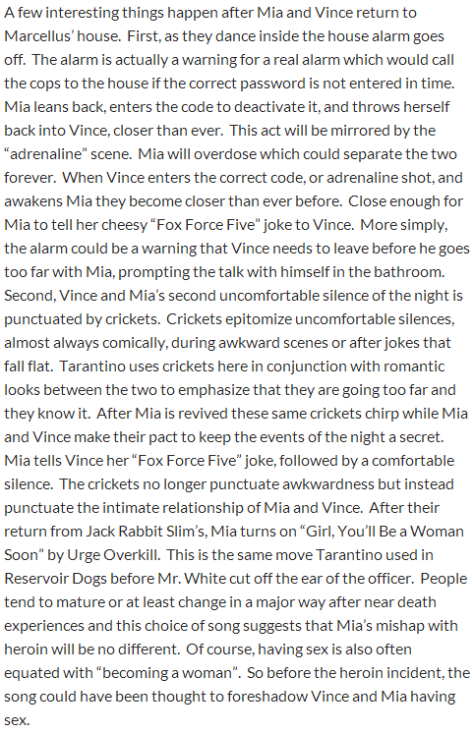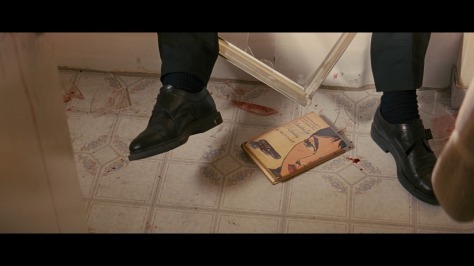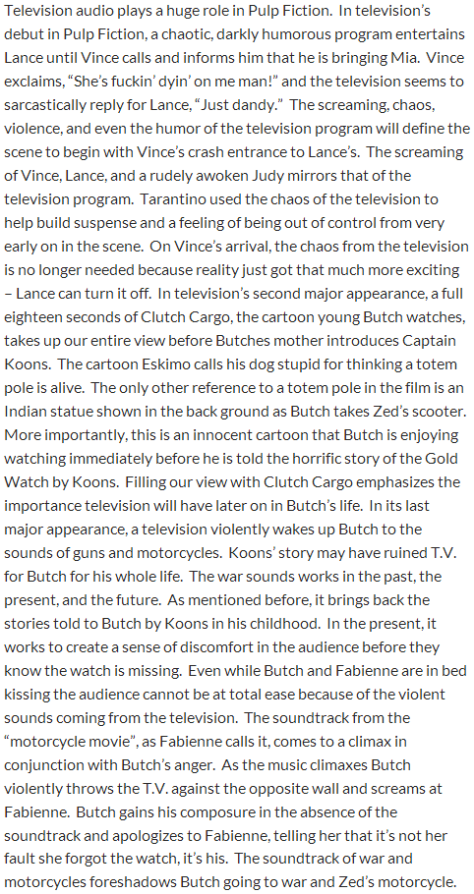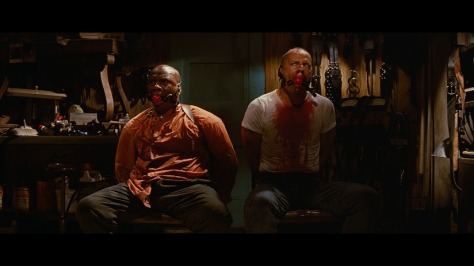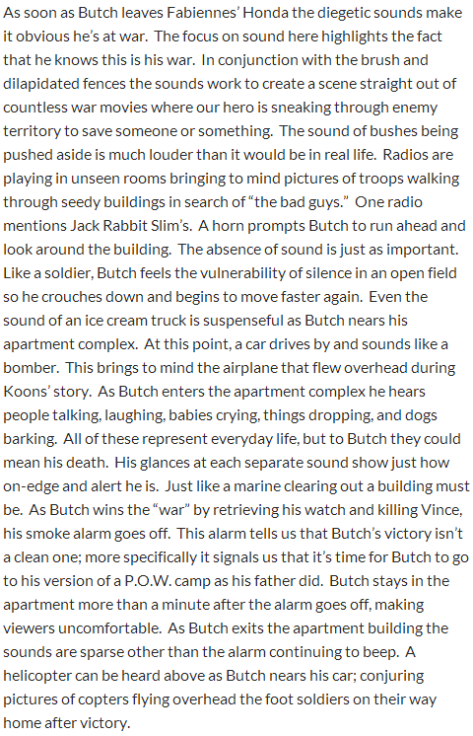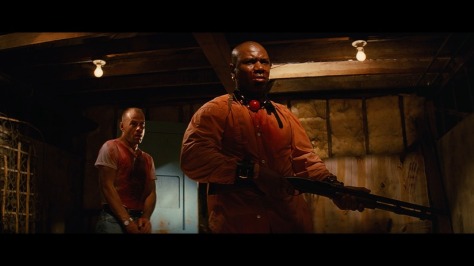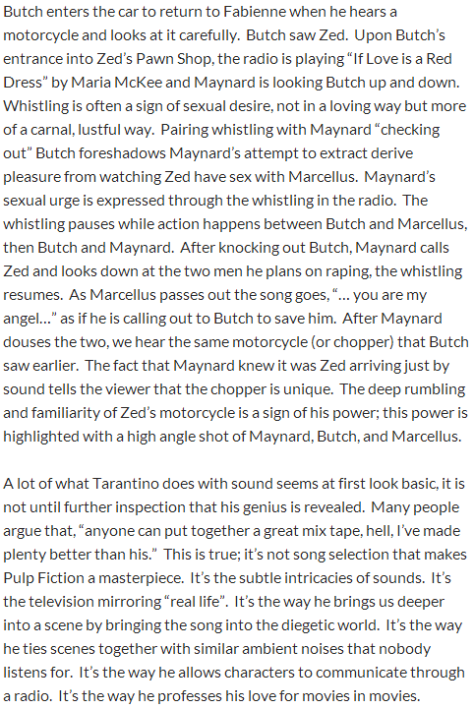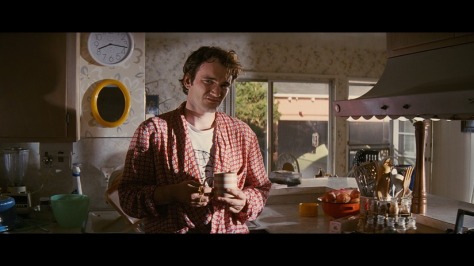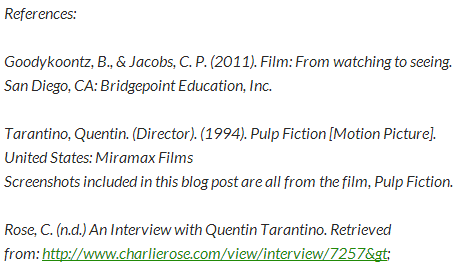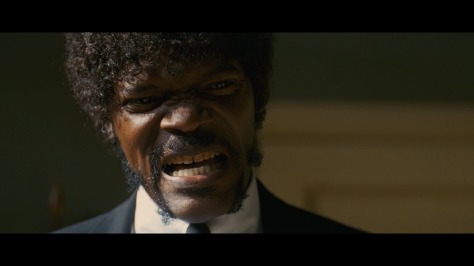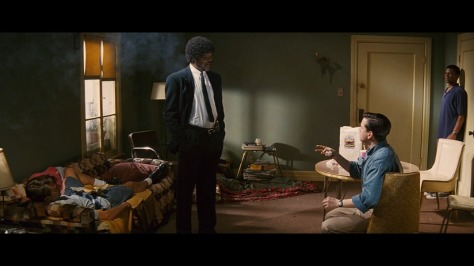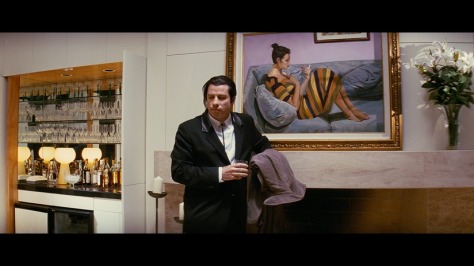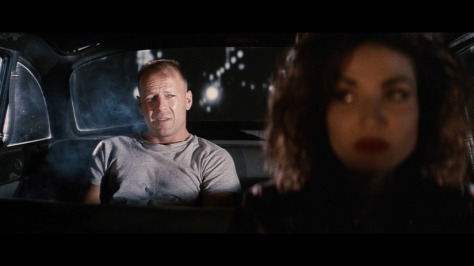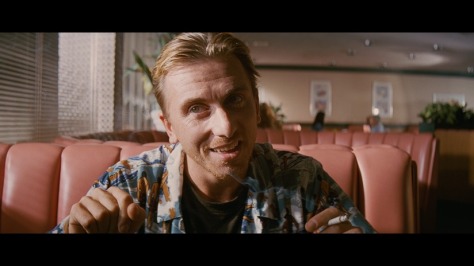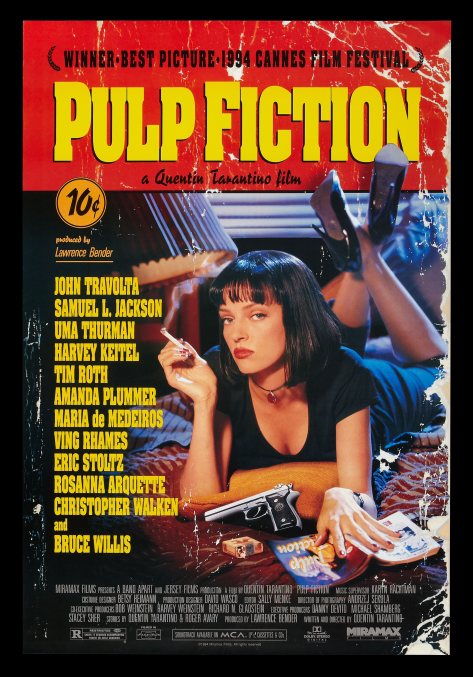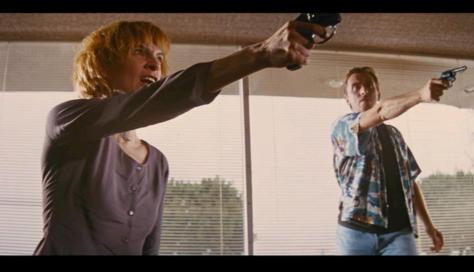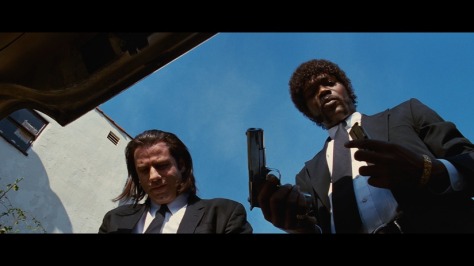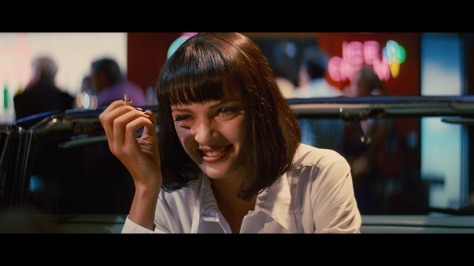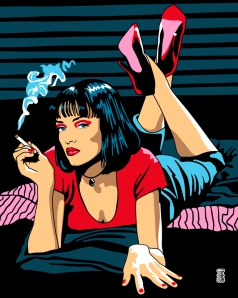
“There’s a passage I got memorized. Ezekiel 25:17. “The path of the righteous man is beset on all sides by the inequities of the selfish and the tyranny of evil men. Blessed is he who, in the name of charity and good will, shepherds the weak through the valley of the darkness, for he is truly his brother’s keeper and the finder of lost children. And I will strike down upon thee with great vengeance and furious anger those who attempt to poison and destroy My brothers. And you will know I am the Lord when I lay My vengeance upon you.” Now… I been sayin’ that shit for years. And if you ever heard it, that meant your ass. You’d be dead right now. I never gave much thought to what it meant. I just thought it was a cold-blooded thing to say to a motherfucker before I popped a cap in his ass. But I saw some shit this mornin’ made me think twice. See, now I’m thinking: maybe it means you’re the evil man. And I’m the righteous man. And Mr. 9mm here… he’s the shepherd protecting my righteous ass in the valley of darkness. Or it could mean you’re the righteous man and I’m the shepherd and it’s the world that’s evil and selfish. And I’d like that. But that shit ain’t the truth. The truth is you’re the weak. And I’m the tyranny of evil men. But I’m tryin’, Ringo. I’m tryin’ real hard to be the shepherd.” – Jules, from the film, Pulp Fiction (1994).
A quick look at actor types and three actors from the film, Pulp Fiction.
Types of actors:
“Character actors: Actors who specialize in playing a wide variety of characters, most often supporting or minor roles rather than leading roles.
Impersonator: An actor who attempts to im–personate actual people for a role, such as in historical and biographical stories.
Personality actor: An actor whose own personality tends to define all the characters he portrays, so that the actor’s name alone lets audiencesknow what their screen character will be like.
Star: An actor, often with a distinctive screen persona, who is well–known and popular with the moviegoing public, often to the point that some avid movie fans become deeply curious about the actor’s private life.
Wild card: A term applied to an actor, usually a star, who is difficult to classify as one certain type, an actor who can play a wide variety ofcharacters equally well without becoming typecast.” (Goodykoontz & Jacobs, 2011).
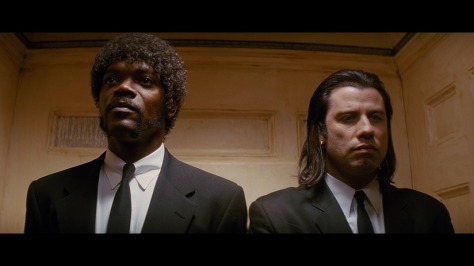
Three actors from Pulp Fiction:
John Travolta – Star/wild card
Samuel L. Jackson – Personality actor/star
Bruce Willis – personality actor/star
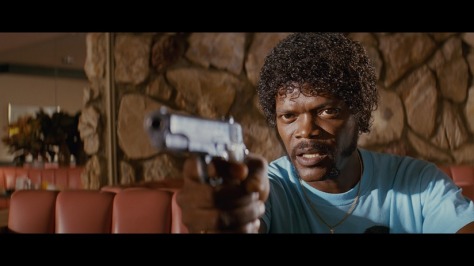
I classified Samuel L. Jackson as both a personality actor and a star. I classified him as a start because he is a very well-known actor in the film industry. I classified him as a personality actor because he brings his own personality to each of his characters or roles and has a definitive influence on how those characters are or will be. He has an authoritative persona and voice, he is rebellious and plays strong roles, is often intimidating and violent, uses swear words often, and almost always has a moustache or goatee in all of his films.
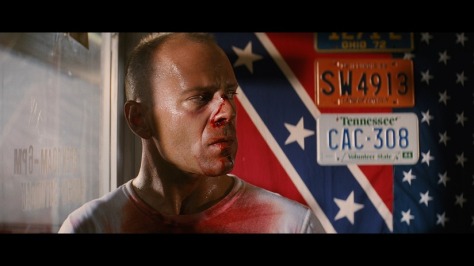
I also classified Bruce Willis as both a personality actor and a star. I classified him as a star because he is also very famous and well-known in the film industry. I classified him as a personality actor because he also brings his own personality to each of his characters. He typically plays roles in which he is heroic or is a likeable wisecracking character. He is frequently casted in action/adventure films and brings his likable persona to each of his characters. He is also almost always seen with a shaven head.
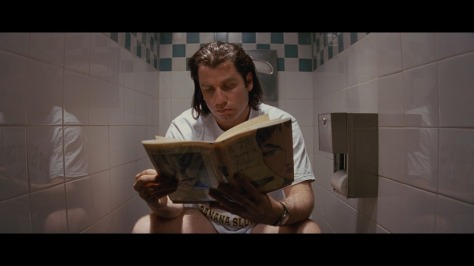
I classified John Travolta as both a star actor and a wild card. He is obviously a star since he is well-known and famous. He is often seen on the covers of magazines or information about his personal life may be found in magazines, tabloids, etc. I classified him as a wild card because of his ability to play different types of roles in a wide variety of films. For example, he played as a main character in a film called Grease, which is a musical/romance film. He played as a main character in a film called Look Who’s Talking, which is a comey/romance film and also played a role in a comedy/family film called Old Dogs. He played in an action/thriller/sci-fi film called Face-Off and has even voiced characters in animated films, such as Bolt. He is often casted in action or crime films, such as Pulp Fiction, From Paris With Love, Killing Season, Savages, The Punisher, etc. One specific example I would like to point out is his character in Killing Season; he plays as brutal Serbian vet. He completely changes his accent and it could surely be difficult for many viewers to identify him immediately due to the change of his voice and appearance. In a video of an interview, which I have included below, Travolta explains that in order to successfully play this role he actually visited the country and spoke with vets there while also being very observant of his surroundings. This is a prime example of a wild-card actor. Based on the other films John Travolta has played in, I believe he would likely be classified in these categories by others. This just shows that he truly is a wild-card and that he is clearly a star actor.
John Travolta – Interview – Killing Season
Killing Season Trailer – Example of Travolta’s character in the film
References:
IMDb.com, (n.d). Pulp Fiction. Retrieved from:http://www.imdb.com/title/tt0110912/
Goodykoontz, B., & Jacobs, C. P. (2011). Film: From watching to seeing. San Diego, CA: Bridgepoint Education, Inc.
Tarantino, Quentin. (Director). (1994). Pulp Fiction [Motion Picture]. United States: Miramax Films
Screenshots included in this blog post are all from the film, Pulp Fiction.

